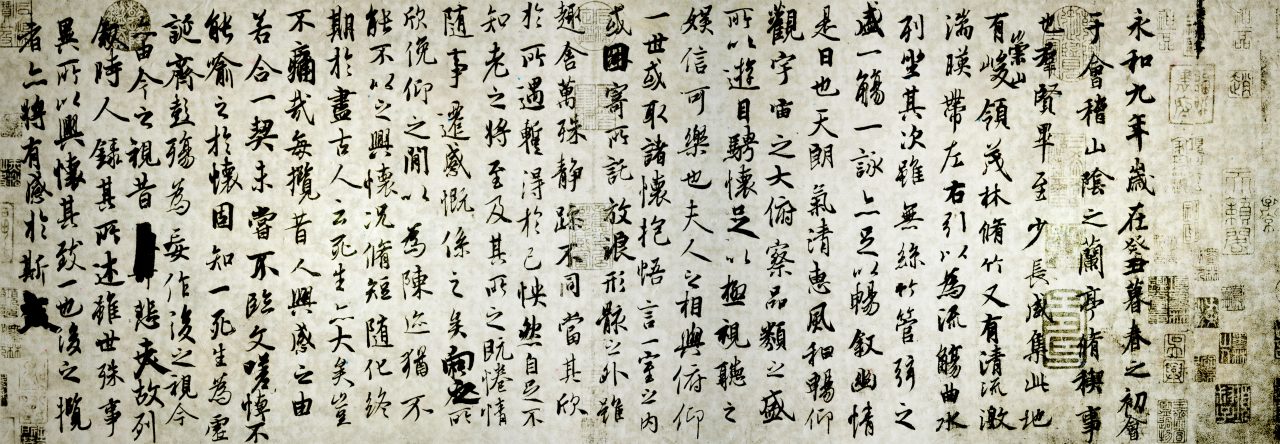In July 1959 the patient had developed a high fever and lost consciousness. She was immediately taken into a local hospitals emergency department for investigation. She was administered an anti-pyretic medication, however her fever would not reduce. She was also given various medications to manage and reduce her heat all to no avail. Her diagnosis was inconclusive. At this point she was discharged from the hospital after requesting Chinese medical treatment. After taking two packages of a heat reducing formula, she had gradually regained consciousness. However, in the evening the following day she once again lost consciousness. Again, she was sent to the hospital for treatment, but as she had once again come down with a critical condition as before, they were still unable to make a clear diagnosis. The old Chinese medical doctor[1] was once again consulted who said he was able to diagnose her. After taking Chinese medicinals, her condition gradually improved.
The old Chinese medical doctor believed her condition was due to cerebral stagnation. She was sent for examination and film of her head, which clearly showed blood stagnation in her cranium, and was thus immediately sent to surgery in order to escape any form of danger.
A month following the surgery she was experiencing twitching in her extremities and coldness in the lower half of her body. She was discharged from hospital and continued using herbal medicines for the next five or six years, with very little clear improvement. In 1965 she travelled here to Róng[2] for a consultation.
Her current symptoms were, twitching in her extremities on the right side, occasional deviation of her mouth and eyes, which occurred five or six times per month and would precede the twitching. Afterwards she would feel numbness on her right side. Over the last few years she was especially fearful of cold, and even during the intense heat of June she would wear a sweater, and her extremities still experienced coldness. Her menstrual cycle was irregular with a pale dark color. Her vision had been receding becoming dim and unclear, and her memory and reaction time were remarkably decreased and slow. She was fatigued and had a poor appetite. Her tongue was pale with a scant amount of grey coating. Pulse was deep and thin.
Symptoms and Disease Mechanisms
- Deep thin pulse, pale tongue, fear of cold, cold extremities, fatigue, twitching in half the body and extremities: symptoms belongs to a Tài Yīn and Shào Yīn spleen and kidney yáng deficiency pattern.
- Twitching of the extremities, deviation of the mouth and eyes: This pattern belongs to tetany disease[3].
After suffering from such a major illness, both qì and blood are damaged, and thus tetany may form. When qì and blood are both deficient, the sinews and vessels will jerk and become hypertonic. For example, Sù Wèn chapter 74 ‘The Great Treatise on the Utmost Truth’ says,
The Channels and Sinews chapter (ch.13) of the Líng Shū says,
Analysis
Tài Yīn, Shào Yīn; qì and blood deficiency.
Among these the qì and blood deficiency are primary.
Treatment Strategy
Here it is appropriate to first warm the center, strengthen the spleen, and harmonize qì and blood.
For this xiǎo jiàn zhōng tāng (minor construct the middle decoction) masters.
Formula:
guì zhī (Cinnamomi Ramulus) 12g
zhì gān cǎo (Glycyrrhizae Radix preparata) 6g
bái sháo (Paeoniae Radix alba) 15g
shēng jiāng (Zingiberis Rhizoma recens) 30g
hóng zǎo (Jujubae Fructus) 15g
yí tang (Maltosum) 60g (dissolved in decoction)
6 packages were given.
She took the six packages above, and followed up ten days later, at which point the twitching in the extremities only occurred once, and the numbness in the body was reduced. In addition, both her spirit and appetite were harmonized, and she was overall making a great recovery.
[1] A Lǎo Zhōng Yī (老中医 ) refers to an older, highly experienced Chinese medical physician, typically held in very high regard throughout the country.
[2] Róng is another name for Chéng Dū.
[3] Refer to chapter 2 in the Jīn Guì Yào Lüè.


Interesting case. He diagnosed Shao Yin and then used Xiao Jian Zhong Tang. Any thoughts as to how he considers this a Shao YIn formula?
It is an interesting case, thanks. Based on the deep-thin pulse, cold limbs, fatigue and fear of cold, you could diagnose it as either Tai Yin or Shao Yin, but I think he based the actual Shao Yin diagnosis on the twitching and deviation (Tetany disease) as he gives the Ling Shu quote above. Now, my understanding is that Professor Hu saw XJZT as a Taiyang formula with qi, blood and fluid vacuity, so it's certainly interesting why he went with this formula unmodified. Maybe simply for the vacuity? He does say that the qi and blood vacuity in this case are primary.